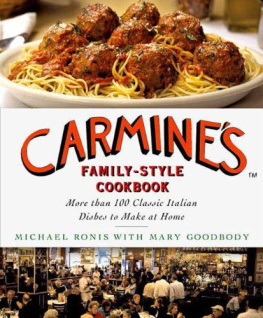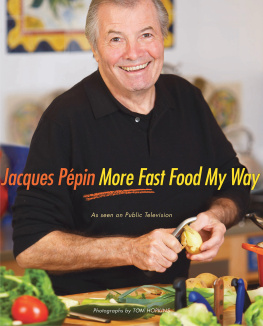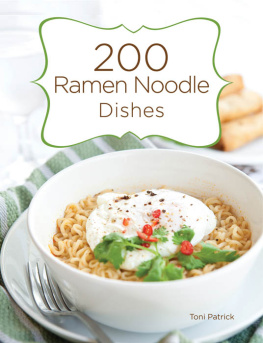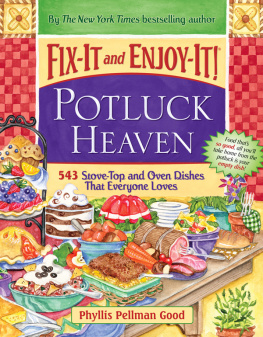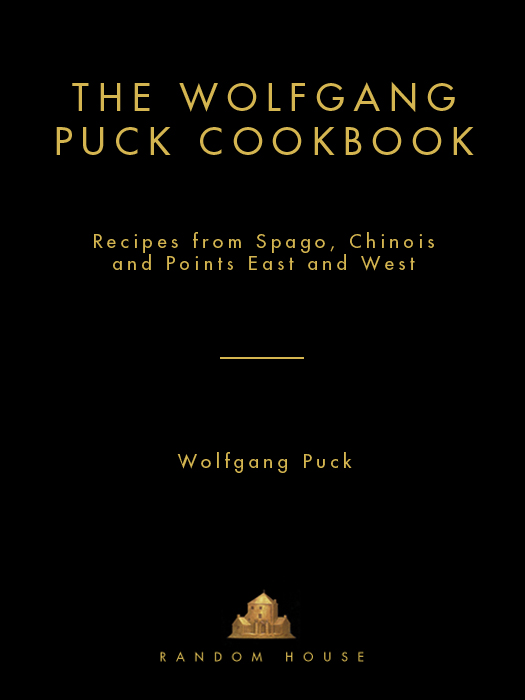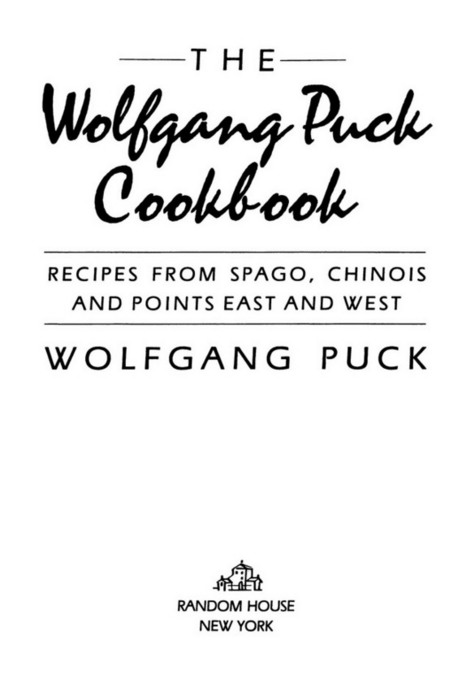
Copyright 1986 by Wolfgang Puck
All rights reserved under International and Pan-American Copyright Conventions. Published in the United States by Random House, an imprint of The Random House Publishing Group, a division of Random House, Inc., New York, and simultaneously
in Canada by Random House of Canada Limited, Toronto.
This work was originally published in hardcover by Random House, Inc.,
New York, in 1986.
Library of Congress Cataloging-in-Publication Data
Puck, Wolfgang.
The Wolfgang Puck Cookbook.
1. Cookery. 2. Spago (Restaurant) 3. Chinois (Restaurant) I. Title
TX715.P952 1986 641.50979494 86-10155
eISBN: 978-0-307-75498-1
v3.1
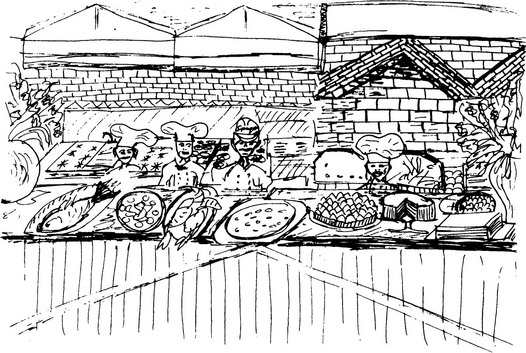
Foreword
T hey asked me to write a few introductory words for Wolfgang Pucks new cookbook. Why, do you suppose? Surely not because I am a culinary maven. It must be because I am both a friend of his and a Landsmann.
Of course we all know the other guy can cook up a storm. But can he write not just another cookbook? Well let me tell youit aint easy.
There are millions of lovers around, considering themselves summa cum laude, black belt virtuosos. They all think they can write manuals on that subject. Nonsense. It takes both a poet and a Feinschmecker like Dr. Ruth Westheimer to put down definitive rules, guidelines and suggestions on sex (including footnotes on how to do it in high altitudes, on express trains, and in case of a head cold).
How do you evaluate a cookbook? Simple enough. The proof of the pudding is in the eating, right? On he has a recipe for a chocolate bread pudding with hazelnuts. Well, I got all the ingredientsbrioche, bittersweet chocolate, ground hazelnuts, almond liqueur. I separated the eggs, I started preheating the oven to 350. Then I noticed that I was making enough for twelve servings. So I called eleven of my friends to come over. Six were at Spagos, four at Chinois, and one was still at the office with his secretary, practicing for that black belt no doubt.
Well I am glad they did not show up. It turned out delicious, I ate it all.
Obviously the book works like magic. In fact the guy is magic. It seems, once every 200 or 300 years that erstwhile Vaterland of ours comes up with a Wunderkind. I wouldnt be surprised if we looked up Wolfgang Pucks birth certificate and found out he had a middle nameAmadeus.
Billy Wilder
Contents
Introduction
T he past few years will go down in history as the rebirth of American cooking. I speak of neither a fad nor a passing fancy, but rather the result of a culinary evolution. Decades ago, the general population did not think along the same lines as James Beard and other such visionaries. The French dominated the restaurant scene, and all else was looked down upon as second class. But time marches on, and change has brought us back to the food belonging to this land and its unique inhabitants. Past and present join forces as time-tested classics combine with new concepts and techniques. There are still some who laugh at this progressiveness, as they stand clutching their Escoffiers. Maybe they dont change the water in their bathtubs for years at a time either!
That is not to say that a solid understanding of basics has become outdated. It is a necessary foundation for further creative development, much as it is in painting or music. But these branches of the arts are also continually moving into new areas. And as Picassos style became less complicated later in life, so has cuisine in America left behind the showing-off typical of youth, maturing to a greater simplicity. We have the security of knowing that this countrys resources are second to none and can stand on their own in preparations that expose natural character, instead of altering it so that you have to guess at what youre eating.
One of the most dramatic of todays food trends is the revival of regionalism. In the name of authenticity and absolute freshness, local products are being used whenever possible, as we learn to depend less and less on imported goods. Indigenous methods, too, are making a comeback. Mesquite grilling, a Southwestern technique employing the wood of a native plant, has made its way into a great many of the nations leading restaurants. Regional cooking, which started out on a very homey, modest level, has become the favorite of fashionable circles!
Another major breakthrough, whose originators were once thought to be crazy, is the mixing of ethnic cuisines. It is not at all uncommon to find raw fish listed next to tortillas on the same menu. Ethnic crossovers also occur when distinct elements meet in a single recipe. This country is, after all, a huge melting pot. Why should its cooking not illustrate the American transformation of diversity into unity?
All these principles come together in the philosophies of Spago and Chinois, my two playgrounds where I can excel at doing what I like best to do. Both are reflections of southern California, but in different ways. The feeling at Spago is American, with suggestions of Italy and southern France: visitors from these countries often tell us that we have captured the spirit of their homelands better than a lot of their own restaurants. The Spago client dictates whether the tone of the meal will be casual or elegant, whether it will be a night for pizza or for foie gras and Champagne.
Chinois, by contrast, is the modern application of dining in the Chinese manner, from my wife Barbaras very original decor to the contemporary menu standards: all ingredients are fresh and locally purchased and no dried products, cornstarch, or MSG are ever seen in our kitchen. When Chinois first opened, people werent quite ready for it; they didnt know what to think of a menu without moo shu pork or egg foo yung. Two years later, with the public not only accepting but demanding our of this cuisine, I predict that the Chinese themselves will be modernizing not too far in the future.
A change in our attitude toward dining out calls for high-quality food in a more relaxed ambience. However, the ambience of the people is more important than the furniture and decoration. People want to feel the presence of other people. Going to a restaurant has come to be regarded as a social event. The atmospheres of Spago and of Chinois promotes this sociability, in the lion-hearted informality of the background music and interior design, in the openness of the seating arrangements. The kitchens are open, too, located right out in the dining area, where you can watch whats going on. We have nothing to hide!
How fortunate we all are to be part of such an adventurous age. No longer fearing to cross boundaries, the cook goes into unexplored territory without intimidation. You dont need to be a Cordon Bleu graduate to do it. Think of cooking as an outlet for your ideas, a release for the artist in you. It took me nearly eight years to break away from the traditions of my European training and feel free to experiment with new ways. But you can start now. Your American heritage is a wonderful one. Let the world know youre proud of it!



